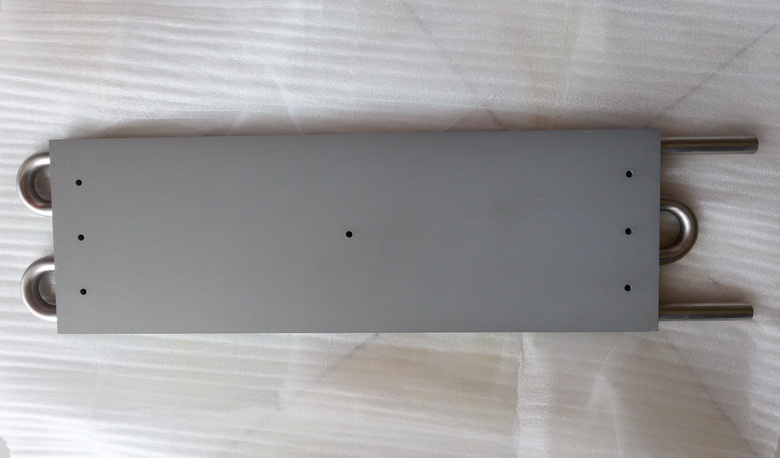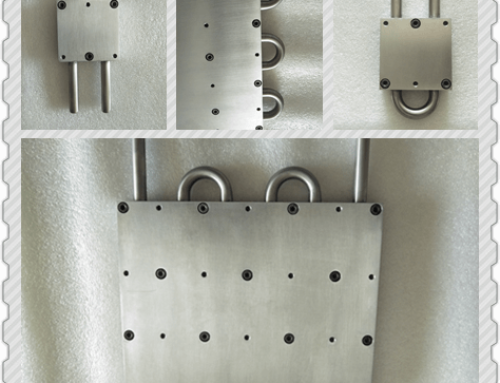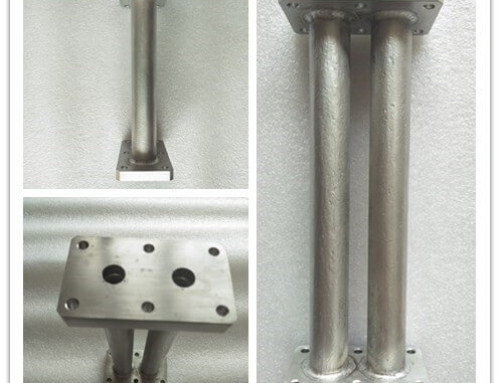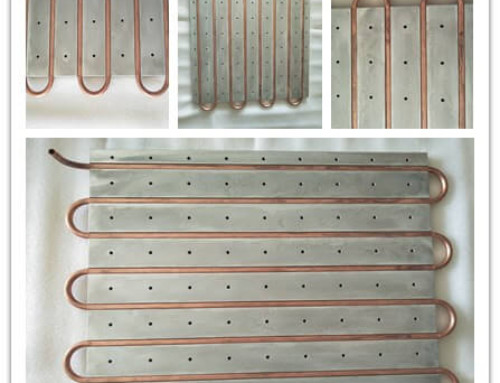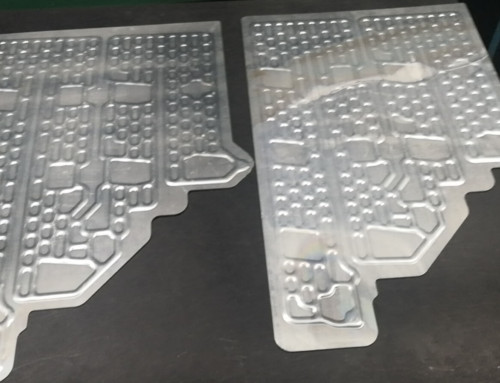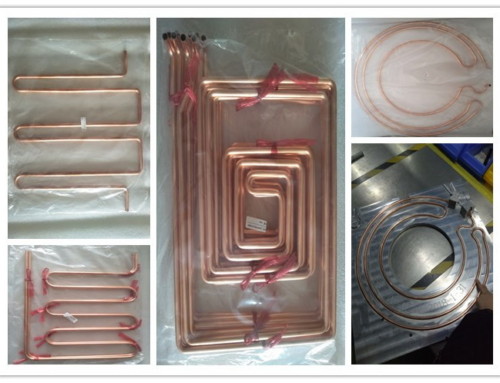How to Choose Anodizing and Electroplating for Aluminum Cold Plate
- Anodizing
Anodizing is a simple electrochemical process that forms a protective coating of aluminum oxide on the surface of the aluminum. The lifetime of the finish is proportional to the thickness of the anodic coating applied.
Aluminum oxide is a hard, durable, weather resistant substance that protects the base metal. The coating may be colored by dyeing or may exhibit bronze tones through diffraction phenomena produced by the coating. The coating grows from the base aluminum metal by this electrochemical process. The coating is integral to the metal and can not peel or flake. The structure of the coating is many small hexagonal pores, which are filled with a “seal” that hydrolyzes these pores to fill them with inert aluminum oxide.
Why use anodizing
This surface finish is used for a number of reasons including:
- For decoration, through a variety of colors
- For a long-lasting appearance
- For protection against weathering
- For surface hardness
- For abrasion and wear resistance
- To reduce friction and improve repellency
- To improve the adhesion of organic coatings (adhesives, varnish, paint)
- To modify electrical properties (insulation)
- To modify visual properties (reflectivity)
Type of Anodizing
There are five main types of anodizing, each with a range of possible processes:
- Barrier anodizing, used for refined aluminum only, for electrical applications
- Sulphuric acid anodizing, used mainly as protection against weathering
- Chromic acid anodizing for aerospace applications
- Hard anodizing which increases the surface hardness of the metal, mainly for engineering applications
- Phosphoric acid anodizing, used to prepare surfaces for adhesive bonding
Good & bad Anodizing
Anodizing that is improperly sealed has poor chemical resistance. Brand new anodizing with a thin coating thickness is nearly identical in appearance to an Aluminum Association Class I (very thick!!) anodized finish, but thin (sub-Class II) anodized coatings are unsuitable for use on exterior curtain wall or metal roofing.
The advantage of a thicker anodic coating is its durability and longer life. The Achilles heel of anodizing is it’s chemical resistance. Eventually the surface of an anodic coating may succumb to acidic pollutants in urban environments. Anodized surfaces, like other building components, must be protected from acidic attack during construction. The life expectancy of an anodized coating is determined by its thickness and the building’s environment.
After many years anodized surfaces may accumulate dirt and stains that look similar to chalking paint. This “chalk” can be removed with a mild detergent combined with an abrasive cleaning technique. A small amount of the anodic coating can actually be removed, leaving behind a renewed anodized finish which can last for another twenty years. This is why anodizers say their product is “renewable”. Once an organic coating has failed, the only options are to re-coat the surface with another paint or replace the metal. When an anodized coating appears to have failed, cleaning often results in a renewed appearance.
2.Electroplating
Electroplating, also known as electrode position, occurs when electric current is used to coat the surface of a metal material. This coating is produced by using the metal material to be coated as a cathode immersed in a metallic salt in an electrolytic cell. The metal of the salt is the metal used to form the plate on the metal material.
Advantages of electroplating
- Decorative applications
- Improve the surface hardness and abrasion resistance
- Reduce the friction coefficient, improve lubricity
- Improve surface conductivity
- Improve corrosion resistance (including combinations with other metals)
- Operational safety
- Improve the bonding force when the rubber is hot pressed
- Improve the reflectivity
- Repair size tolerance
Type of electroplating
Important surfaces for electronics
- Tin (Sn)
- Nickel/gold (Ni/Au)
- HAL Sn/Pb (Hot Air Leveling)
- Copper (Cu) for PCB
Surfaces for corrosion protection
- Zinc (Zn)
- Zinc/nickel (Zn/Ni)
- Zinc/iron (Zn/Fe)
What are the applications of electroplating?
Electroplating is used on silverware, jewelry, automobiles, motorcycles, hand and medical tools, light fixtures, steel bolts, nuts, and washers, electrical connectors, and in many industries. Silverware will resist wear longer when electroplated. Automobiles and motorcycles have chrome plating on their steel parts. Chrome plating is added to the steel parts of many hand tools and medical supplies in order to keep the tools from wearing. Zinc is added to steel bolts, nuts and washers. And in many industries electroplating is used for better functioning of the machinery, to prevent corrosion of the metals and for decoration.
What are some issues with wastes from electroplating?
Wastewater is formed in each of the process baths of the electroplating process where rinsing is performed and the level of danger associated with the wastewater depends on the level of toxic solutions and metals used to perform the electroplating. Spillage and dumping of the process bath water can further contribute to the issues of waste with electroplating. When cleaning process tanks themselves, large amounts of waste containing toxic organics and metals can be produced. Hot plating baths form solvents and vapors that can elevate levels of volatile organic compounds (VOCs) and volatile metal compounds. Furthermore, the mixing of cyanide and acidic wastewaters should be avoided as this mixture produces lethal hydrogen cyanide gas.
What were past dangers of electroplating?
The lack of proper ventilation systems in industry in the past has lead to many health hazarders for industry workers. Fumes created from this process are dangerous to breathe in. Extremely dangerous chemicals are sometimes used in electroplating that were highly misunderstood in the past. Cyanide compounds are highly desired as cyanide will remove any undesired impurities and will caused an even layer of metal deposit with low levels of sensitivity towards impurities to form on the metal material. At the same time, cyanide exposure obstructs the proper functioning of the metabolic system and caused rapid death. Chromium is a popularly used metal compound in electroplating as it a great corrosion-resist surface while also having a bright and attractive appearance. One of the chromium compounds used in electroplating, hexavalent chromium, is highly toxic and can cause ulcers in form in the nasal membrane, and is believed to cause lung cancer when overexposure occurs.

